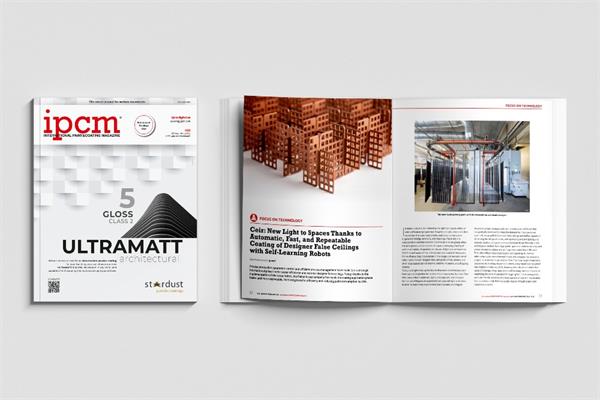
Read the latest issue of the magazine dedicated to surface treatments and organic and inorganic finishes!
About a year ago, I came across a press release from a digital marketing agency stating that “business strategies are increasingly built on digital experience”. Although banal in some ways, since it voiced something that has been known for at least five years in the B2C world, this sentence led me to reflect on how this can be applied to the B2B world as well.
Digital transformation in the manufacturing industry has been talked about (and jabbered on) well enough through the concepts of Industry 4.0, Internet of Things and Big Data, Augmented Reality and “smart factories”. Today, at the dawn of the Industry 5.0, we are perfectly aware that “digital transformation” does not only mean digitalising or automating manual operations to optimise workflows, but also redefining strategies, creating new competitive advantages and future-proofing processes to move towards an industrial reality “characterised by a range of new technologies that are fusing the physical, digital, and biological worlds”.
What has been talked about too little is how digital communication and social media are affecting the way the manufacturing industry interfaces with customers and the outside world, with the so-called “stakeholders”, i.e. all those individuals or groups with interests related to the operation or performance of a company: not only shareholders, employees, suppliers and customers, but also local or central authorities and communities.
Today, digital communication is at the heart of any sales strategy, be it B2C or B2B, because it gets the users involved no matter who they are. User interaction and engagement are the metrics that measure its success. Tailoring messages to the target audience and building an online reputation has also become vital for manufacturing businesses.
Eos Mktg&Communication, the publisher of the group of technical magazines gathered under the ipcm® brand name, has also been operating for some years as a digital & content marketing agency for companies in various industries, not exclusively in the surface treatment sector. From design to heating and plumbing fixtures, from insurance to coating, up the chemical industry, the communication needs of B2B companies are in fact similar:
- Taking care of and harmonising different communication channels and landing points;
- Finding a good balance between fast-consumption and long-form content;
- Drafting an editorial plan that balances corporate, commercial and informative content;
- Creating a proprietary database.
In digital communication, you are only successful if you can keep users on your content. People are bombarded by communications of all kinds and those few moments they can spare are precious. Good digital communication practices are required to know how to make the most of these moments – or how to multiply them once you have won one. This is the most complex aspect of B2B communication, which is notoriously less attractive and more technical than B2C communication.
Aside from the fact that this is certainly a topic of common interest, talking about it in an ipcm® editorial allows me to emphasise that the articles in our magazines, especially the case studies we offer free of charge to our advertisers, are long-form content of great importance and quality, which can also be turned into short-form content if properly shared on social channels, creating an exceptional way to amplify a company’s message. This also means that it is still important to have a continuous presence in traditional media, seeking action and investment-oriented synergies with digital media to exploit the potential of both.
Similarly, dear old trade fairs, such as the forthcoming PaintExpo 2024 (Karlsruhe, Germany, 9-12 April), have been given a new lease of life thanks to digital technologies, creating new user experiences for both exhibitors and visitors and facilitating the follow-up of contacts and the acquisition of leads. What better way to improve one’s proprietary database?
READ THE MAGAZINE!